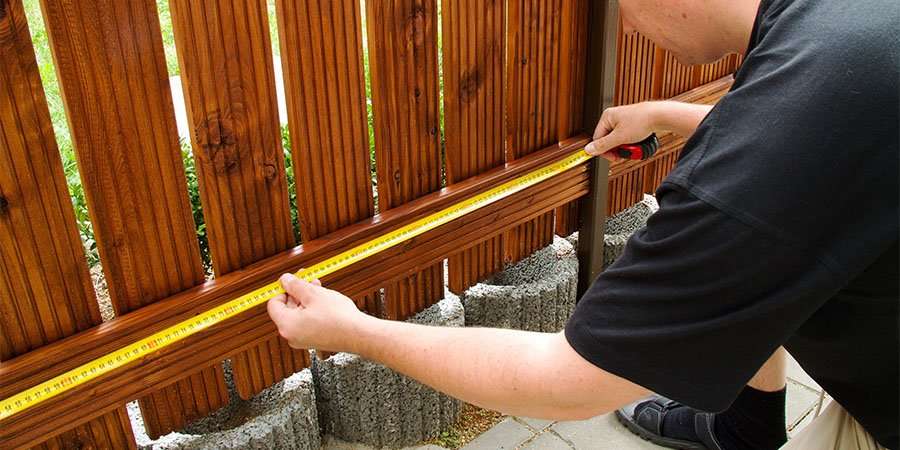All Categories
Featured

Whether it's solid winds, rain, snow, or extreme heat, weather conditions can progressively weaken your fence, leading to pricey repair services or replacement. There are a number of steps you can take to shield your fence from weather-related damage and prolong its lifespan.
- Select the Right Product. The kind of material your fencing is made from plays a substantial role in exactly how well it will certainly endure climate condition. Some products are normally more resistant to damage than others. :
Wooden Fencings: While gorgeous and classic, wood can be vulnerable to moisture, rot, and pests. Pressure-treated timber or cedar can offer far better resistance to these issues. Plastic Fences: Plastic is extremely immune to wetness, rot, and pests. It likewise stands well to severe sunlight and heavy rainfall. Steel Fences: Wrought iron or light weight aluminum fencings are durable and can hold up against a variety of climate condition. They can, nevertheless, deal with rust over time, particularly otherwise correctly covered. Compound Fences: Made from a mixture of timber fibers and plastic, composite fences are more immune to weather-related damage compared to traditional wood fences. Choosing the right material for your region's environment is the initial step in protecting your fencing from weather damages.
- Seal or Spot Wooden Fences. Wooden fencings are especially at risk to damage from dampness, UV rays, and temperature variations. Among one of the most reliable ways to secure your timber fence is by applying a safety sealer or tarnish. These items assist:
Prevent Water Damage: Sealers produce a water-resistant barrier, stopping dampness from leaking right into the timber and causing mold, mold, or rot. Secure Versus UV Damages: A good stain or sealer will additionally block unsafe UV rays from the sun, which can cause wood to dry out, crack, and stain in time. Protect the Fence's Appearance: Regular discoloration assists preserve the all-natural charm of the timber and extends its life expectancy. It's suggested to reapply the discolor or sealant every 1-- 2 years to maintain your fencing in excellent condition.
- Install an Obstacle for Wind Security. Solid winds can trigger considerable damages to your fence, specifically if it is weak or high. Wind can bend or break wood panels, loosen fencing posts, or also create the whole fence to collapse. Setting up a windbreak-- such as growing bushes, hedges, or setting up a mesh barrier-- can aid safeguard your fence from high winds.
Furthermore, you can reinforce the blog posts with concrete or steel dental braces to give additional stability and stop shifting or leaning.
- Trim Overhanging Branches. Dropping branches can damage panels or damage the fencing articles, leading to pricey repair services. Keeping the branches cut back decreases the risk of branches damaging off and triggering damage to the fencing.
- Routine Assessments and Upkeep. Doing routine upkeep and assessments is crucial to capturing prospective problems before they escalate. After a heavy tornado, evaluate your fence for any indications of damages, such as loosened panels, leaning posts, or busted areas. Looking after small problems prior to they come to be bigger ones can assist prolong the life of your fence.
In addition, cleaning your fencing regularly to remove debris, mold and mildew, or dust can help protect its appearance and stability. For wooden fencings, delicately pressure wash the surface to get rid of built-up gunk, and for vinyl fencings, use a mild detergent to clean up any type of discolorations.

- Guarantee Proper Water Drainage. Water damage is one of the most common weather-related concerns that impact fences. Poor drainage can lead to standing water around your fencing posts, which can trigger the articles to rot or deteriorate over time.
- Apply a Protective Finish to Metal Fences. Metal fences, such as those made from iron or steel, are extremely long lasting yet can be vulnerable to corrosion otherwise correctly maintained. Applying a protective finishing or paint that is specifically developed for metal can aid avoid corrosion and rust. Make certain to examine the fence periodically for any signs of corrosion, and address it right away by fining sand and painting the impacted areas.

Conclusion. Your fencing is a valuable financial investment, and safeguarding it from weather-related damage will assist ensure that it remains to serve its function for years to come. By picking the appropriate materials, regularly keeping your fence, and taking steps to protect it from the aspects, you can reduce weather-related damage and expand its life expectancy. Whether you're managing strong winds, hefty rain, or the extreme sunlight, these simple steps can go a long method in preserving the condition and appearance of your fencing, conserving you time and cash in the lengthy run.
Latest Posts
Unlock WyHy Federal Credit Union – Key Advantages for Your Money Goals
Published May 24, 25
1 min read
Explore WyHy FCU – Top Benefits for Your Success
Published May 22, 25
1 min read
Shield and Improve Your Home with Weathercraft's Exterior siding Solutions
Published May 21, 25
1 min read